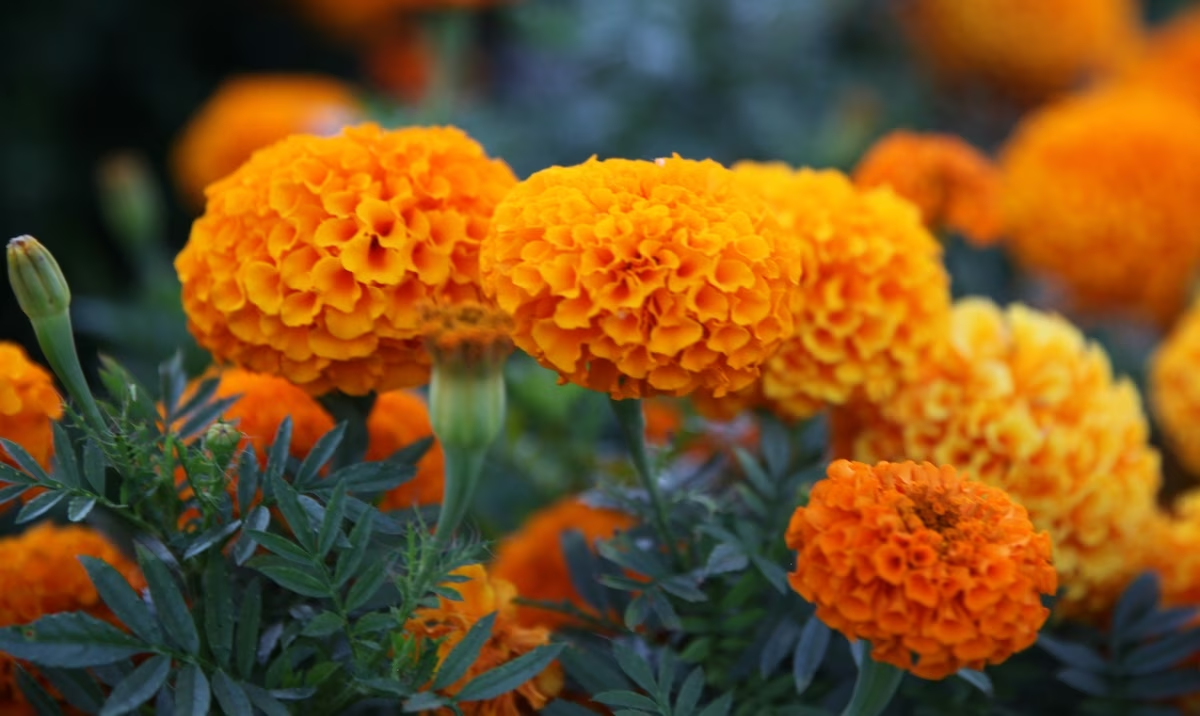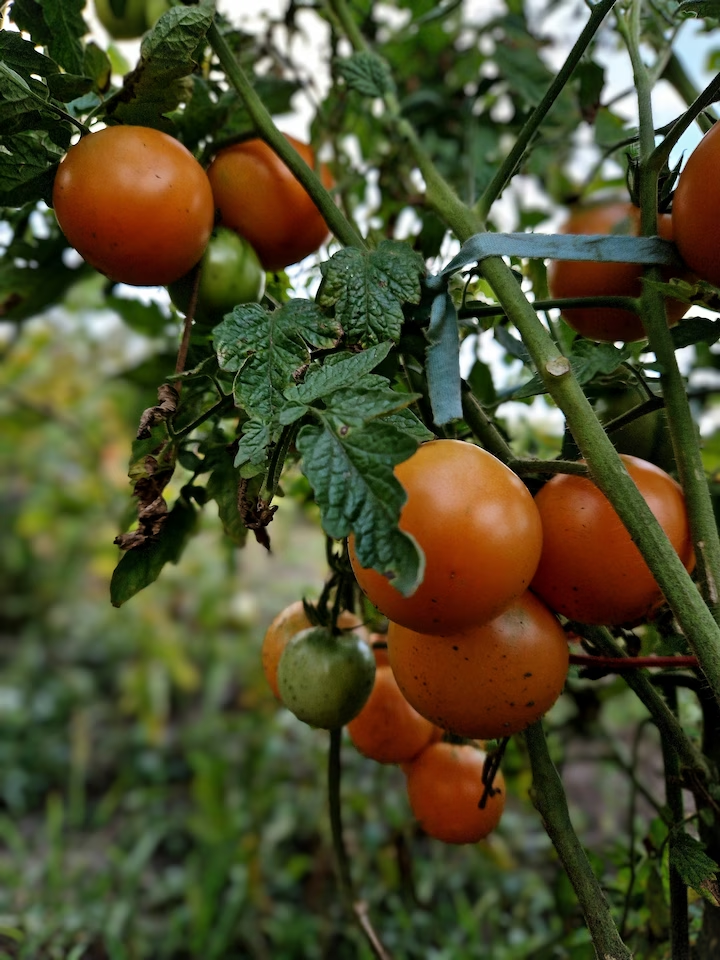Marigold
Tagetes spp.
Marigolds are cheerful, easy-to-grow annual flowers known for their bright yellow, orange, gold, and sometimes red or cream blooms. They flower profusely from late spring until the first frost and are popular for borders, containers, and companion planting in vegetable gardens. Flower forms vary from single petals to large, dense pom-poms.

Quick Information
Planting Calendar
Growing Guide for
1 Sow Seeds Indoors
Start seeds indoors 4-6 weeks before the last expected frost date. Sow seeds about 0.5 cm (1/4 inch) deep in seed starting mix. Maintain moisture and warmth (21-24°C / 70-75°F) for germination, which typically occurs in 5-7 days. Provide strong light after emergence.
2 Sow Seeds Directly Outdoors
Alternatively, sow seeds directly into garden beds or containers after all danger of frost has passed and the soil has warmed. Plant seeds 0.5-1 cm (1/4-1/2 inch) deep. Keep the area moist until seedlings emerge.
3 Harden Off Seedlings
For seedlings started indoors, gradually acclimate them to outdoor conditions over 7-10 days before transplanting. Increase exposure to direct sunlight and outdoor temperatures incrementally.
4 Transplant Seedlings
Plant hardened-off seedlings or nursery-bought plants into their final location after the danger of frost has passed. Space according to variety (typically 15-45 cm / 6-18 inches). Plant at the same depth as they were in their previous container. Water thoroughly.
5 Watering Marigolds
Water regularly after planting until established. Mature marigolds are relatively drought-tolerant but bloom best with consistent moisture. Allow the top layer of soil to dry slightly between waterings. Water at the base of the plant to keep foliage dry.
6 Fertilize Sparingly
Marigolds thrive in average soil and generally do not require heavy feeding. Excessive fertilizer, especially nitrogen, can lead to abundant foliage with fewer flowers. A light feeding with a balanced fertilizer mid-season is optional if growth appears slow.
7 Deadhead Spent Flowers
Remove faded and dead flower heads regularly throughout the blooming season. This practice, called deadheading, encourages the plant to produce more flowers instead of putting energy into seed production and keeps the plant looking neat.
8 Monitor for Pests and Diseases
While generally robust, marigolds can occasionally attract spider mites, especially in hot, dry conditions, or develop fungal issues like powdery mildew in humid weather with poor air circulation. Check plants periodically.
Explore More Plants

Tomato Fruit
Tomatoes are a warm-season favourite, prized for their juicy, flavourful fruits that elevate home cooking, fresh salads, and rich sauces. From tiny cherry tomatoes to huge beefsteaks, these versatile plants offer something for every gardener. Growing your own tomatoes gives the pleasure of harvesting sun-ripened, home-grown goodness straight from your garden, packed with taste you can’t find in the shops.

Chilli Pepper Fruit
Chilli peppers are the fiery fruits of the Capsicum family, known for their intense heat and use in various cuisines. They range in size, shape, and spiciness, adding a kick to dishes worldwide. They thrive in warm climates and require careful cultivation.

Sweet Pepper Fruit
Sweet peppers, also known as bell peppers, are a variety of Capsicum annuum prized for their large, mild-flavored fruits. They are used in a wide range of culinary applications, from salads and stir-fries to stuffed peppers and sauces. They require warm conditions and plenty of sunshine to thrive.